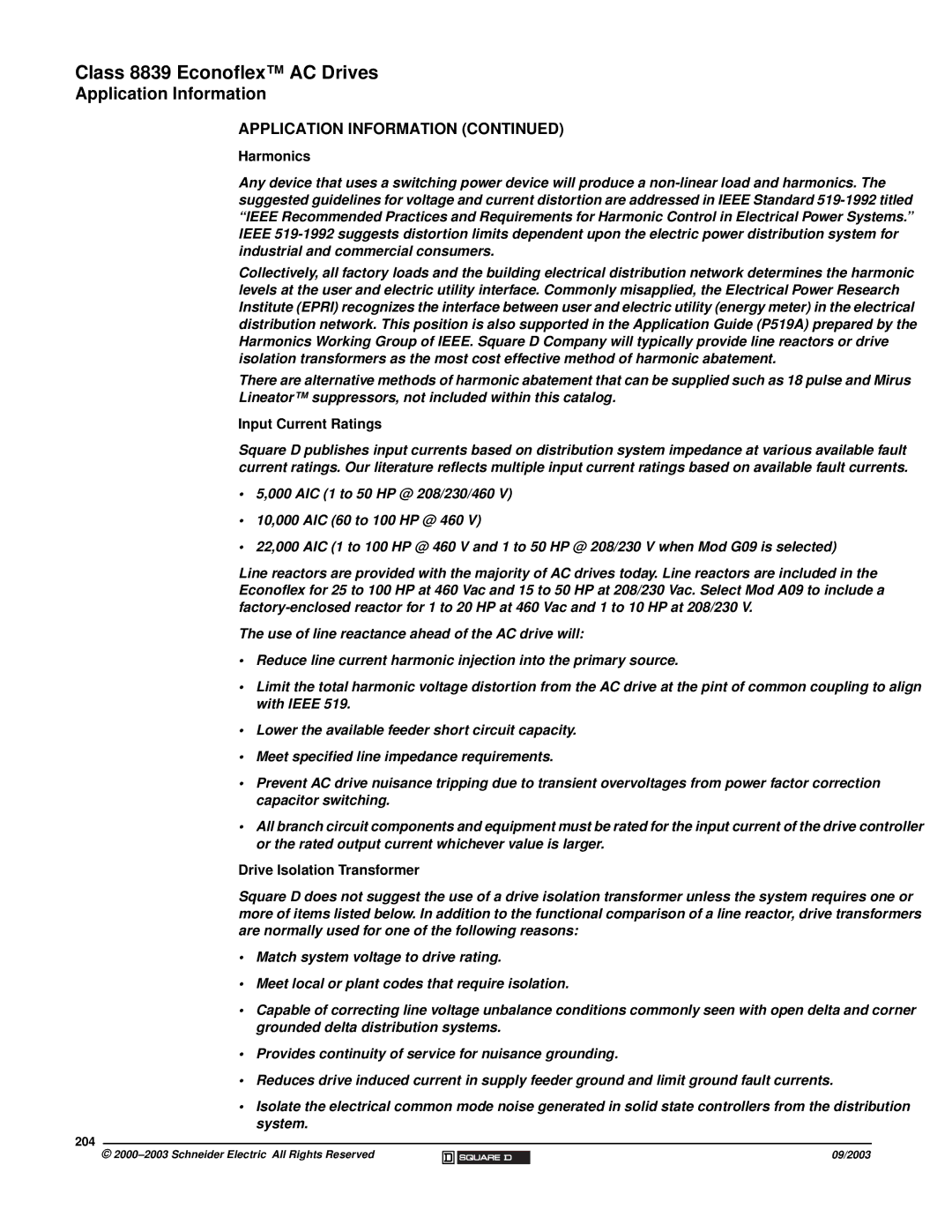Class 8839 Econoflex™ AC Drives
Application Information
APPLICATION INFORMATION (CONTINUED)
Harmonics
Any device that uses a switching power device will produce a
Collectively, all factory loads and the building electrical distribution network determines the harmonic levels at the user and electric utility interface. Commonly misapplied, the Electrical Power Research Institute (EPRI) recognizes the interface between user and electric utility (energy meter) in the electrical distribution network. This position is also supported in the Application Guide (P519A) prepared by the Harmonics Working Group of IEEE. Square D Company will typically provide line reactors or drive isolation transformers as the most cost effective method of harmonic abatement.
There are alternative methods of harmonic abatement that can be supplied such as 18 pulse and Mirus Lineator™ suppressors, not included within this catalog.
Input Current Ratings
Square D publishes input currents based on distribution system impedance at various available fault current ratings. Our literature reflects multiple input current ratings based on available fault currents.
•5,000 AIC (1 to 50 HP @ 208/230/460 V)
•10,000 AIC (60 to 100 HP @ 460 V)
•22,000 AIC (1 to 100 HP @ 460 V and 1 to 50 HP @ 208/230 V when Mod G09 is selected)
Line reactors are provided with the majority of AC drives today. Line reactors are included in the Econoflex for 25 to 100 HP at 460 Vac and 15 to 50 HP at 208/230 Vac. Select Mod A09 to include a
The use of line reactance ahead of the AC drive will:
•Reduce line current harmonic injection into the primary source.
•Limit the total harmonic voltage distortion from the AC drive at the pint of common coupling to align with IEEE 519.
•Lower the available feeder short circuit capacity.
•Meet specified line impedance requirements.
•Prevent AC drive nuisance tripping due to transient overvoltages from power factor correction capacitor switching.
•All branch circuit components and equipment must be rated for the input current of the drive controller or the rated output current whichever value is larger.
Drive Isolation Transformer
Square D does not suggest the use of a drive isolation transformer unless the system requires one or more of items listed below. In addition to the functional comparison of a line reactor, drive transformers are normally used for one of the following reasons:
•Match system voltage to drive rating.
•Meet local or plant codes that require isolation.
•Capable of correcting line voltage unbalance conditions commonly seen with open delta and corner grounded delta distribution systems.
•Provides continuity of service for nuisance grounding.
•Reduces drive induced current in supply feeder ground and limit ground fault currents.
•Isolate the electrical common mode noise generated in solid state controllers from the distribution system.
204
©
09/2003
